Search Results
Fine Jewelry University Articles matching: “Natural Aquamarine”
Showing only FJU Article results. Click here to show all results.
Fine Jewelry University (Show All FJU Articles)
-
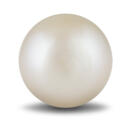
Gem in the Spotlight: Pearl
…time, layer upon layer of nacre is deposited around the irritant, eventually forming a pearl. This process can occur naturally or via human intervention. Natural pearls grow in the wild without human intervention. They are very rare, and … locations around the world. The process by which they are created is completely unpredictable, and as a result, natural pearls come in a wide range of shapes, sizes, and colors. They are typically irregular in shape and have a unique, …
-
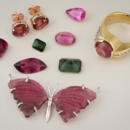
Gem in the Spotlight: Tourmaline
… of modern gemology, most tourmaline was believed to be ruby, sapphire, or emerald. Gemology of Tourmaline Gemologically speaking, tourmaline is its own mineral and not a species or member of a different family (unlike emerald and aquamarine, for example, which are members of the beryl family). It has a refractive index of 1.624 to 1.644 and a Mohs hardness of 7 to 7.5 which makes it softer than topaz or sapphire and harder than tanzanite or opal. Tourmaline is found in a …
-

What are “Blood Diamonds”?
… Process. now more than 99% of the world’s diamonds are from conflict free sources While diamonds have been used to fund conflict, the problem is not the diamonds themselves but the rebels who exploit diamonds (along with other natural resources) to achieve their illicit goals. The vast majority of diamonds come from countries at peace. These countries have been able to invest the revenue from diamonds into the development of infrastructure, schools and hospitals for the …
-
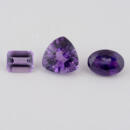
Gem in the Spotlight: Amethyst
… amethysts are now appearing in inexpensive jewelry. Because the cost of testing is higher than the cost of even the natural stones it is not often performed. Beware of stones of perfect clarity, calibrated sizes, and precision cutting. … 96 carat heart shaped amethyst. It resides in the collection of the Smithsonian Institution, National Museum of Natural History. The amethyst was most likely mined in Brazil and exhibits a deep, rich purple color. Amethyst also naturally …
-
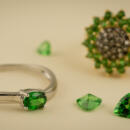
Gem in the Spotlight: Tsavorite Garnet
… clean Tsavorite, gently scrub it with a soft toothbrush and a solution of mild dish soap and warm water. Why Tsavorite Tsavorite has all of the qualities you want in a gemstone: beauty, rarity, intrinsic value, and romance. With its natural, fresh green color in a variety of shades and scintillating brilliance, Tsavorite is one of the most beautiful green gemstones in the world. It is a garnet so it is traditionally used for January’s birthstone. But, you don’t have to be…
-
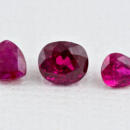
Gem in the Spotlight: Ruby
… rubellite tourmaline (the red variety of tourmaline) gets its name. Pliny the Elder mentioned rubies in his work Natural History, including notes on their durability, which means that their physical properties have been known well for over … the imagination of people for centuries. Whether you are a gem collector, a jewelry lover, or simply appreciate the natural beauty of the world, rubies are definitely a gemstone worth owning. If you are looking for a fantastic new piece of …
-
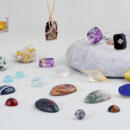
Gem in the Spotlight: Quartz
… and sometimes unattainably expensive? If you answered quartz to all these questions you would be right (but naturally you looked at the title and knew). Quartz is one of the most common minerals on earth. Many quartz varieties are cut into … is the “Berns Quartz,” named after the donors that donated it to the Smithsonian’s National Museum of Natural History. It is an 8,000 pound (yes you read that correctly) slab of natural clear quartz and is one of the largest clusters ever …
-
Caring for and Cleaning Your Jewelry
… it easily. I have seen diamonds only held in the jewelry by dirt and grease. If you do the cleaning in a sink, take the precaution of plugging the drain and using a small screen strainer. How to Care for Jewelry What is the hardest natural substance on earth? Diamonds. Legend says diamonds are indestructible. Diamonds are remarkable gems, hard enough to scratch everything, including themselves. Diamonds that rub together will scratch each other, so keep diamonds from …
-
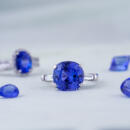
Gem in the Spotlight: Tanzanite
… Gemologists refer to this gem as blue zoisite. The vast majority (current estimates are around 95%) of tanzanite is heat treated to help bring out the vibrant blues. The stones that haven’t been heated by humans were heated through natural effects while they were still underground. Without heating, most tanzanite would be a brown color, similar to smoky quartz. The very small percentage of tanzanite that isn’t heated and is still pretty enough for jewelry displays …